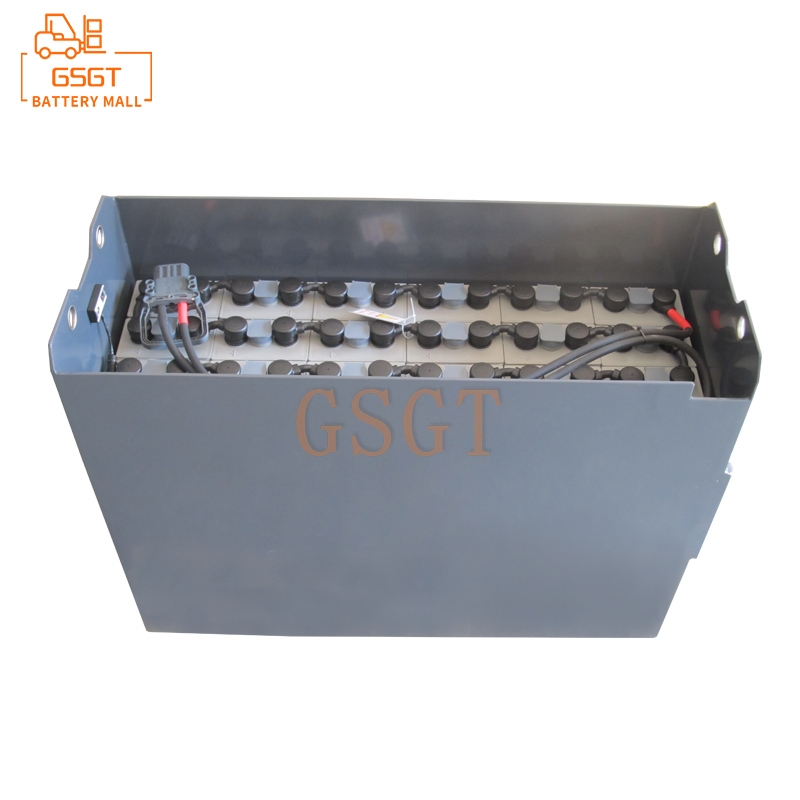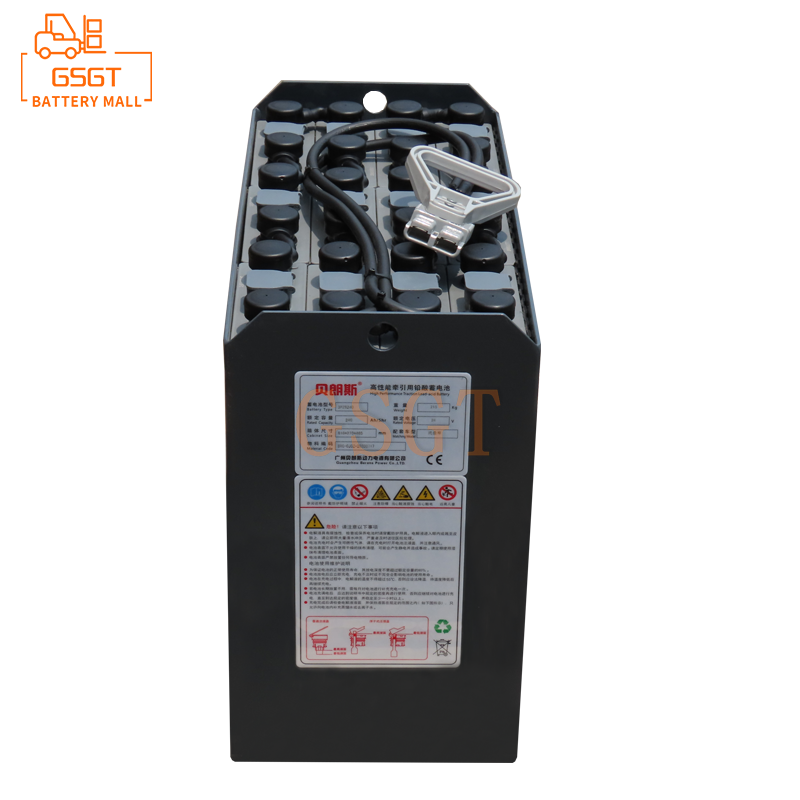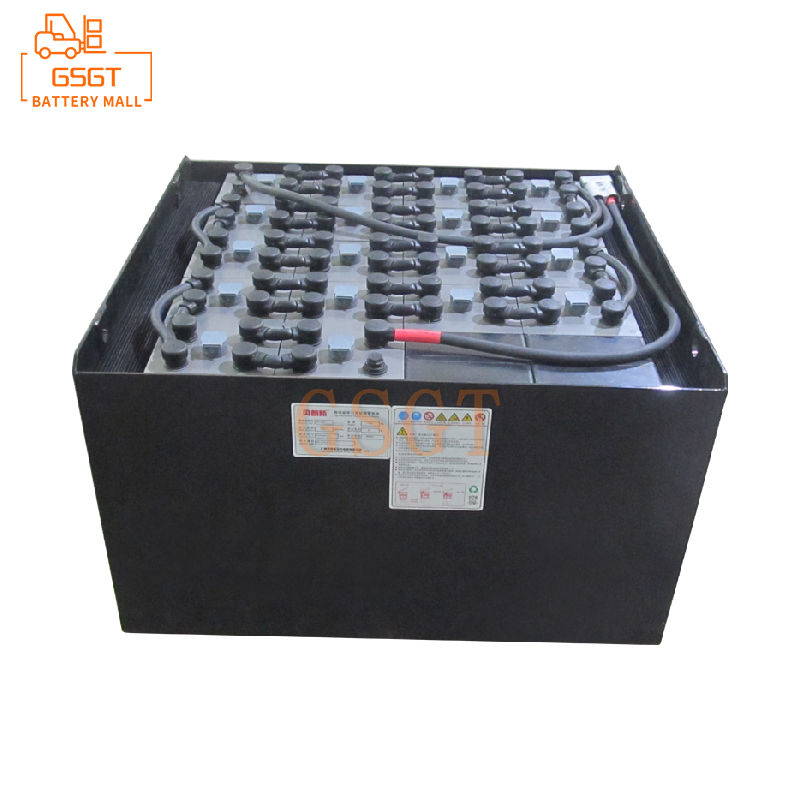Time:2025-05-27 11:17:13
Browse:585
In the field of material handling, forklifts, as key equipment, the selection of their power sources is of vital importance. Lead-acid batteries, with their unique advantages, occupy an important position in the field of forklift power. How to select lead-acid batteries suitable for forklifts has become a focus of attention for many enterprises and users. This article will provide you with a detailed analysis of the key points for selection from multiple dimensions.
Determine the key parameters based on the operation requirements of forklifts
1. The load and operating conditions determine the battery capacity
When forklifts are in operation, the load weight, lifting height and traveling distance are important factors to consider when assessing battery capacity. If forklifts need to frequently move heavy objects, such as in industries like steel and building materials, where the load weight often reaches several tons, large-capacity batteries are required to sustain the operation. Take a forklift capable of handling a 5-ton load as an example. Compared with a forklift capable of handling a 1-ton load, the battery capacity it requires may be several times higher. At the same time, the working conditions with large lifting heights and long driving distances also put forward higher requirements for battery capacity. For forklifts operating in high-rise shelf warehouses, frequent high-altitude lifting operations, if the battery capacity is insufficient, will lead to insufficient power of the forklift and affect the operation efficiency.
2. The frequency of operations affects the selection of battery types
The frequency of homework is also a key factor. For forklifts with single-shift operation and low working frequency, ordinary flat lead-acid batteries might be sufficient to meet the requirements. Due to its relatively low cost, it offers high cost performance in this usage scenario. For forklifts that operate in multiple shifts and frequently, such as those in logistics distribution centers, which need to work continuously for long periods, tubular lead-acid batteries are more suitable. The plate structure design of tubular batteries enables them to have higher capacity and longer lifespan, and better meet the demands of high-intensity operations.
Gain an in-depth understanding of the performance parameters of lead-acid batteries
1. Compatibility between voltage and capacity
The voltage and capacity specifications of lead-acid batteries are diverse. Common voltages include 24V, 36V, 48V, etc., and capacities range from several hundred ampere-hours to over a thousand ampere-hours. When making a choice, it is necessary to ensure that the battery voltage matches the voltage of the forklift motor. If the voltage does not match, it may cause the motor to fail to work properly and even damage the motor. If the rated voltage of a certain model of forklift motor is 48V, a 48V battery pack should be selected. At the same time, the appropriate capacity should be determined based on the operation intensity and duration of the forklift. Generally speaking, when the operation intensity is high and the duration is long, large-capacity batteries should be selected to ensure the continuous and stable operation of the forklift.
2. Battery internal resistance and charging and discharging efficiency
The internal resistance of the battery affects the charging and discharging efficiency. The lower the internal resistance, the smaller the energy loss during charging and discharging, and the better the battery performance. In practical use, batteries with low internal resistance can charge faster and provide a more stable voltage output during the discharge process. For instance, in the scenario of rapid charging for forklifts, low internal resistance batteries can store more electrical energy in a short period of time, meeting the emergency operation requirements of forklifts. High internal resistance batteries not only have a long charging time but also may cause severe heat generation, affecting battery life and safety.
3. Cycle life takes into account long-term costs
Cycle life refers to the number of times a battery can be fully charged and discharged under certain conditions. Batteries with a long cycle life can reduce the frequency of replacement and lower the long-term usage cost. For frequently used equipment like forklifts, choosing lead-acid batteries with a long cycle life is particularly important. Generally, the cycle life of high-quality lead-acid batteries can reach 1,500 times. In some scenarios where battery life is highly demanded, battery products with a longer cycle life can be selected to enhance economic benefits.
The characteristics and applicable scenarios of different types of lead-acid batteries
1. Ordinary lead-acid battery
Ordinary lead-acid batteries have a simple structure and low cost, and are widely used in some scenarios where battery performance requirements are not high and budgets are limited. For small warehouses and forklifts used for short-distance transportation within factories, ordinary lead-acid batteries can meet the basic operational requirements. However, its drawback is that it requires frequent maintenance, regular checks of the electrolyte level, replenishment of distilled water, etc., and its cycle life is relatively short.
2. Colloidal lead-acid battery
Colloidal lead-acid batteries turn the electrolyte into a colloidal state. Compared with ordinary lead-acid batteries, they have better sealing performance and shock resistance, and can adapt to more severe working environments. In some places with poor road conditions and strong vibrations, such as construction sites and mines, gel lead-acid batteries can reduce the risk of electrolyte leakage and ensure the stable operation of the battery. Meanwhile, it has a low self-discharge rate and good storage performance, making it suitable for forklifts that are not frequently used but need to remain available at all times.
3. Tubular lead-acid battery
The positive plate of the tubular lead-acid battery adopts a tubular structure, which effectively increases the contact area between the active substance and the electrolyte, thereby enhancing the battery capacity and cycle life. In industries such as logistics and ports that have high requirements for the intensity and continuity of forklift operations, tubular lead-acid batteries, with their outstanding performance, can provide stable and long-lasting power for forklifts, reduce downtime caused by insufficient battery performance, and improve operational efficiency.
Pay attention to battery brands and supplier services
1. Brand influence and product quality
Well-known brands often offer better guarantees in terms of product quality. Brands such as Lishen and Chao Wei have rich experience and advanced technology in the field of lead-acid batteries. They use high-quality raw materials and advanced production techniques to ensure stable battery performance and long service life.
2. After-sales service and technical support
Provide comprehensive after-sales service and technical support. This includes timely battery fault repair, regular maintenance and care guidance, battery usage training, etc. Once there is a problem with the customer's battery, technicians can be promptly arranged to handle it, reducing the downtime of forklifts. At the same time, we also provide battery usage training for customers to help them use and maintain batteries correctly and extend their service life. When making a choice, it is necessary to examine the coverage of its service network and the quality of service to ensure that timely and effective support can be received during the usage process.
Comprehensively assess environmental factors and safety requirements
The influence of temperature on battery performance
1. The performance of lead-acid batteries is greatly affected by temperature. In high-temperature environments, the self-discharge of batteries accelerates, and the evaporation of the electrolyte intensifies, which may lead to water loss and a decrease in battery capacity. For forklifts operating in outdoor warehouses with high temperatures in summer, cooling measures should be taken for the batteries, such as installing cooling fans, etc. In a low-temperature environment, the internal resistance of the battery increases, the chemical reaction rate slows down, and the battery capacity and discharge performance decrease. For forklifts operating in cold regions, batteries with low-temperature heating functions can be selected, or insulation devices can be equipped for the batteries to ensure their normal operation in low-temperature environments.
2. Safety performance and protective measures
Lead-acid batteries pose certain safety risks during use. For instance, electrolyte leakage may corrode equipment and cause personal injury, and hydrogen gas may be produced during the charging process, leading to an explosion. Therefore, it is necessary to choose batteries with good sealing performance to reduce the risk of electrolyte leakage. Meanwhile, the charging site should be well-ventilated to prevent the accumulation of hydrogen. Some batteries are also equipped with safety devices such as safety valves. When the internal pressure of the battery is too high, the safety valve will automatically open to release pressure, ensuring safe use. During the usage process, strictly follow the operating procedures, take proper protective measures, and ensure the safety of personnel and equipment.
Selecting lead-acid batteries suitable for forklifts requires a comprehensive consideration of multiple factors. Starting from the operation requirements of forklifts, clarify the key parameters such as battery capacity and type; Gain an in-depth understanding of battery performance parameters, paying attention to indicators such as voltage, capacity, internal resistance, and cycle life; Select the battery suitable for the working scenario based on the characteristics of different types of batteries. Attach importance to brand and supplier services to ensure product quality and after-sales support; At the same time, by comprehensively assessing environmental factors and safety requirements, the most suitable lead-acid battery should be selected for the forklift to ensure its efficient, stable and safe operation.

$2040

$850

$4220

$5710

MESSAGE
Professional And Efficient
Security
Affordable Price
Professional Services